It’s The Old Army Game – W.C. Fields and Louise Brooks in Ocala Florida – Part Three – Fields Chased Around Town
[image error]Here’s the third and final post about W.C. Fields and Louise Brooks filming It’s The Old Army Game (1926) in Ocala, Florida. In the first post Fields plays an embattled pharmacist dealing with rude customers, nagging relatives, and pesky firefighters. Fields’ corner store still stands at the SW corner of Broadway and Main (now 1st). In the second post Fields’ employee Louise Brooks attracts an admirer, a smitten real estate promoter from New York played by William Gaxton, who follows Louise from the train station and around town. The plot gets underway here in the third post, when Fields allows Gaxton to sell real estate investments from his store. (In a reverse on the speculative 1920s Florida real estate boom, Gaxton sells New York property interests to people living in Florida!)


[image error]Above, inside the store, the property interests are selling like hotcakes. While these store scenes were filmed on an interior stage in Astoria, Queens, New York (where Fields later filmed Running Wild in 1927), the giant photo-mural in the background accurately represents the view you would have seen looking from the true corner drug store doorway – the large red brick Ocala House Hotel that once stood along the east (right) side of the town square, prominent in this vintage postcard looking north. Fields’ shop is the orange building to the lower right.


[image error]The giant photo-mural behind Fields upper left reveals the distinctive brick porch of the Ocala House, appearing earlier in the film in this true location shot above of Gaxton searching for Louise in the prior post. Later in the film Fields runs past this same porch, as described below. At left, you can read “OCALA HOUSE” on the photo-mural in this shot.


When Fields flees a mob later in the film, he runs north up Main (now 1st) towards Broadway, providing a more complete view of the Ocala House that stood east of the town square, matching this closer view of Gaxton searching for Louise from the prior post.

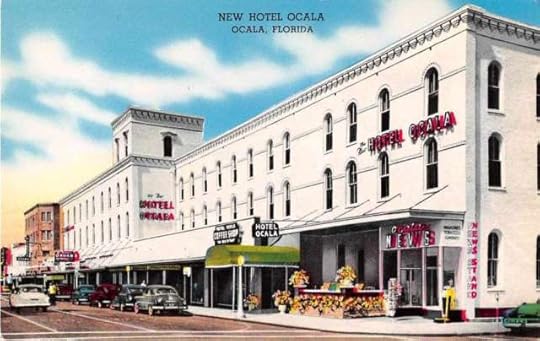
[image error]I’m fascinated by the Ocala House appearing on camera, because contemporary 1920s photos of this lost landmark are hard to find. (The above views are circa 1890 and 1950). When a devastating 1883 fire on Thanksgiving Day destroyed most wooden structures in town, the Ocala House Hotel was re-built with brick in 1884, serving as a local landmark for decades before being demolished in the 1960s. The hotel site today is an open lot.
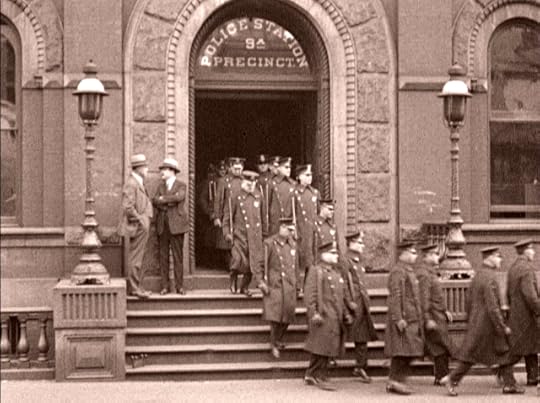
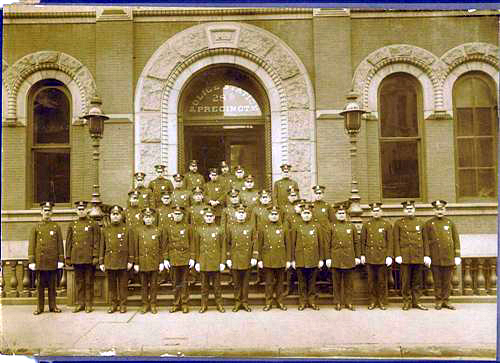
Cutting from the frenzied sales inside Fields’ store, we see a pair of New York police detectives planning Gaxton’s arrest for fraud. I’ll cover this and all other New York scenes in the film in a later post.
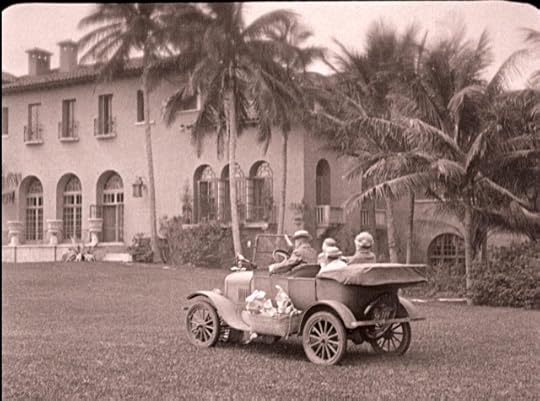
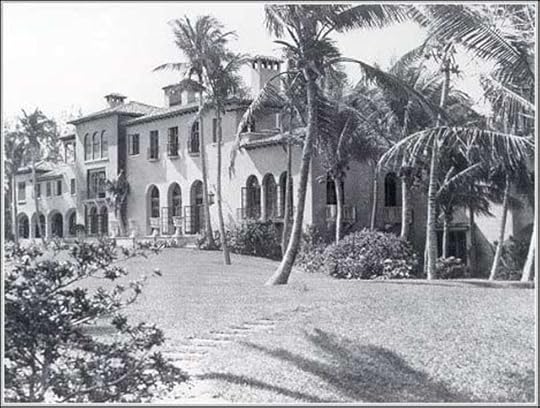
Next, Fields takes a break from the real estate sales for a disastrous family picnic staged on the grounds of the Stotesbury estate, El Mirasol, in Palm Beach – detailed in this post.
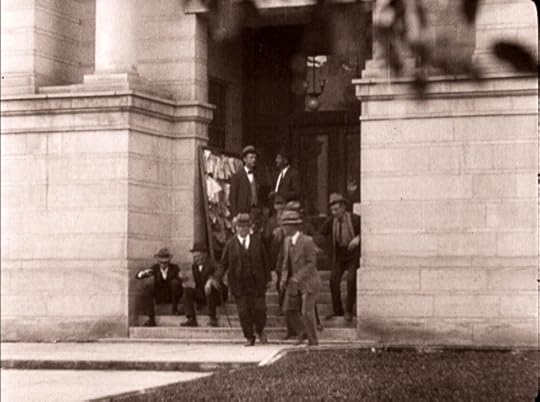


[image error]After discovering the real estate fraud, Fields heads to New York to try to set things right (see future post about New York). Unbeknownst to Fields, Gaxton, reformed by Louise Brooks’ love, comes through on the investment deals, and suddenly everyone in town has become wealthy. Above, Gaxton shares the good news beside the former Marion County Courthouse. At right, from the first post, the south end of the courthouse appears behind Gaxton earlier in the film as he stares into Fields’ corner shop window.


Views looking west towards the former courthouse. The bandstand in the postcard (or its replica) now stands in the center of the square.
[image error]
Looking north – Fields’ route chased by the mob was limited to left-right along Broadway, Magnolia (orange) at left, and Main (now 1st) (pink). Osceola at right still has train tracks running north-south.
Returning from New York, seemingly a failure, Fields sneaks into town fearing a tar and feather mob reception. Instead, the ecstatic townspeople want to give Fields a hero’s welcome, resulting in their comedic chase around town.


To begin the chase, Fields sprints east along Broadway from Main (now 1st) towards Osceola. His corner drug store appears at far back behind him, while closer at back is the same sidewalk scale Louise strolls by in the prior post.



Fields runs south down Main (now 1st) from Broadway, upper left view looks south, lower left looks north towards a magazine rack loaded with March and April 1926 publications, all discussed in this post. The vintage postcard looks north up Main (now 1st) from Fort King. Fields ran south towards us on the right – the red line points to the “EAT” sign discussed below. The postcard striped corner awning also appears behind Louise, below. The left side buildings in the postcard remain standing – those to the right are all gone.


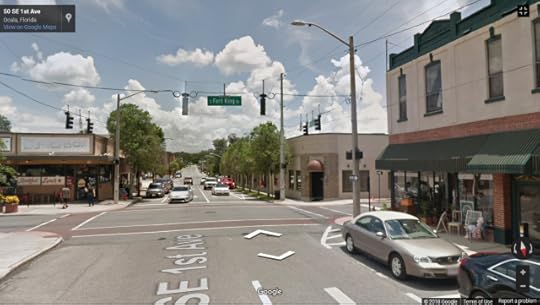
The prominent “EAT” sign appearing behind Fields and Louise is barely visible in the postcard above. Here, looking south, the view behind Fields shows the truncated store corner at the SW corner of Fort King – it appears to be the same building today.

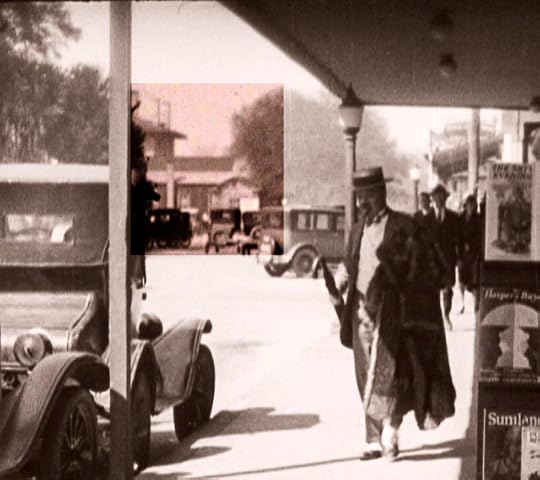
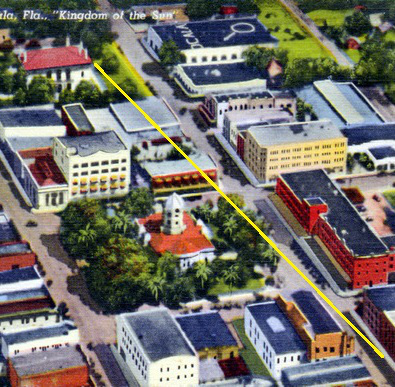
Zooming in on this view north we see the two chimneys on the right (east) end of the former Ocala Post Office – the line of sight depicted at right. The postcard photo was taken after 1924, as the Sanborn fire insurance maps from that year show no buildings north of the square that would block the view of the Post Office from Fields’ spot.


At left, a crowd of elated townspeople joyfully recognize Fields passing by, and are eager to hail him a hero. Both views show the corner brick porch of the former Ocala House, once standing at the NE corner of Broadway and Main (now 1st).

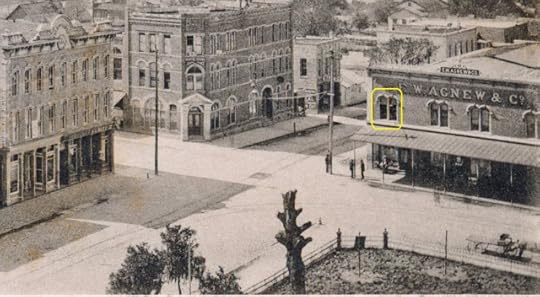

Fields dashes west along Broadway towards Magnolia. The sidewalk awnings above Fields were not yet built in the earlier vintage photo. The yellow box marks the same south window on the E. W. Agnew & Co. building. This could be the same building with the red awning, now heavily remodeled, standing there today.
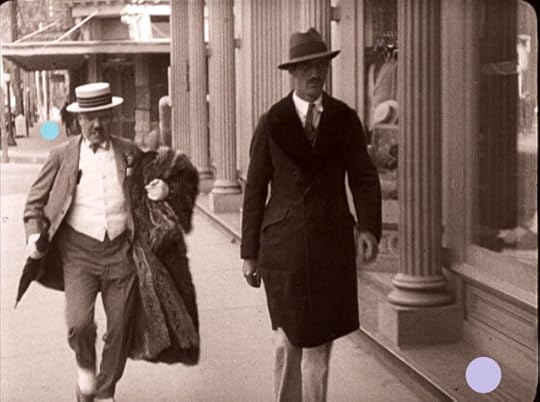
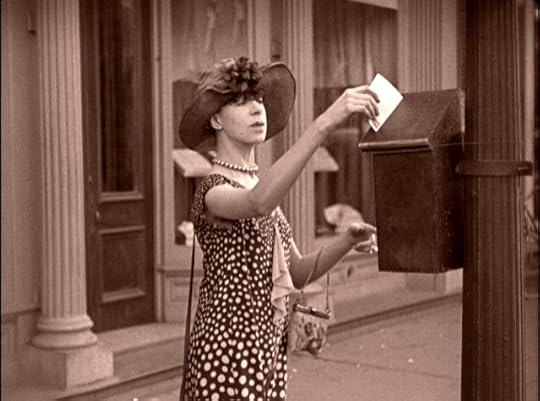

[image error]Again running west along Broadway from his corner store on Main (now 1st), only this time looking east, as Fields hopes to slip by unnoticed. The blue dot marks where Fields and Louise appeared near the sidewalk scale, mentioned previously. The men’s hat window display complements the reverse view of the matching window display appearing early in the film behind Elise Cavanna.

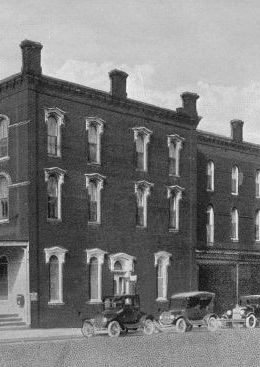

By reversing these movie images, the combined window reflections provide a rare view of the south side of the Ocala House facing Broadway.
This combined image shows the NE corner of Broadway and Main (now 1st), and the site of the Western Union shop on the south side of the Ocala House appearing moments later in the film.

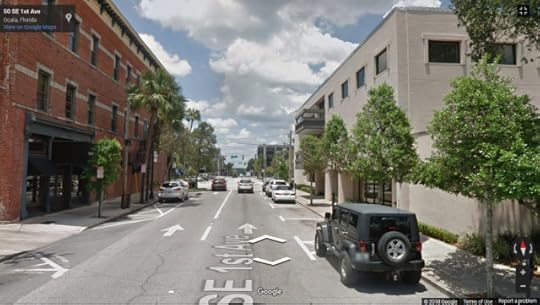
Fields races north up Main (now 1st) alongside his corner store on Broadway – the trees are part of the town square across from the Ocala House visible to the right.
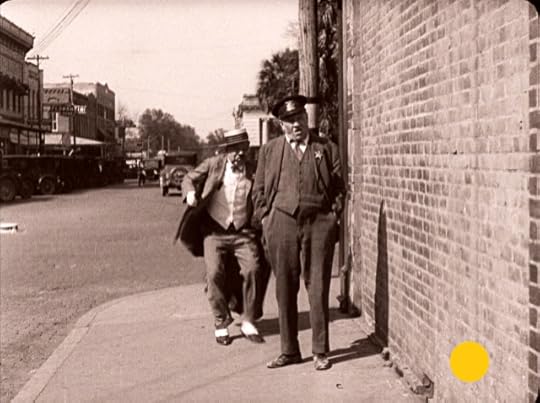


Looking north up Magnolia at Broadway, Fields attempts sneaking past a security guard, with the Ocala National Bank building still standing behind him on the far NE corner of Magnolia and Silver Springs.



Looking north, a closer view of the bank visible behind Fields, along with matching corner masonry details visible in the vintage photo looking east down Broadway from Magnolia.


In the final tracking shot, Fields runs west towards the camera along Broadway from Osceola, as a huge crowd to the east masses downhill behind him. The view roughly matches the prior view of Louise at the same corner, with the train tracks running left-right along Osceola.



A bit further west, both the former Ocala bandstand (left), and prominent second floor porch of the former Hotel Hoffman (right), appear briefly behind Fields (see map above for details).

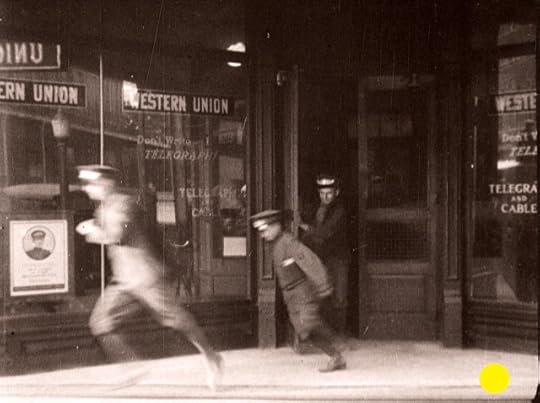
Even further west along Broadway, Fields runs past the Western Union shop (box) mentioned previously.
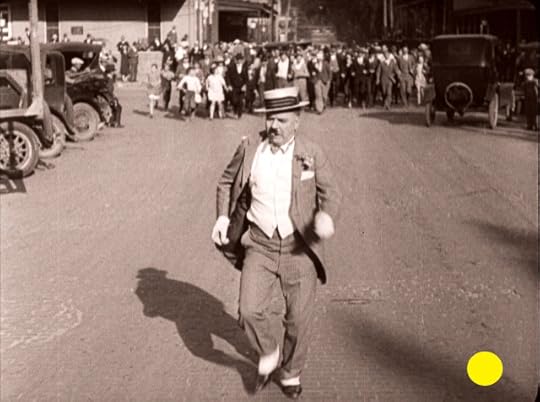
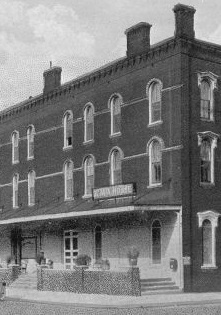

Fields has now run west along Broadway from Osceola past the corner of Main (now 1st). Looking due east, the corner brick porch of the Ocala House Hotel appears to the left.




A later shot of the security guard struggling to keep up was also filmed looking east down Broadway from Osceola, the train tracks running left-right along Osceola are visible in the film, and still present today. The modern view now includes a train crossing sign.
[image error]Fields dashes for safety hiding in the county jail. While I could find no confirming photos identifying this spot, the 1912, 1924, and 1930 Sanborn fire insurance maps each [image error]report that behind the original city hall near the SE corner of Broadway and Osceola there was a small attached building (see map) labelled “lock up,” so perhaps this is what portrays the jail in the film.

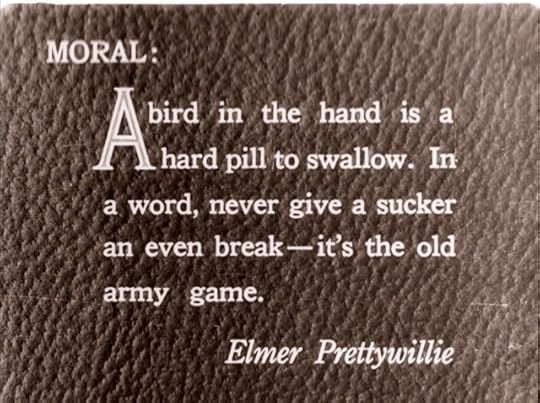

All’s well that ends well; Fields is the home-town hero, we’re offered sage advice about swallowing birds in the hand, and true love triumphs. This delightful comedy is a wonderful precursor to Fields’ “talkie” career, and reminds us yet again of how vintage movies are also a vibrant historic record of the past.
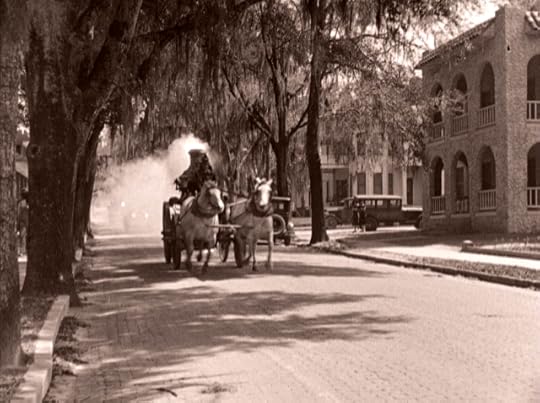


For any Ocala history buffs, here are a few scenes I was not able to identify.
Kino Lorber It’s The Old Army Game.
Photo sources: The State Library and Archives of Florida, Marion County Historical Photographs.
Looking north at the Ocala National Bank building.



